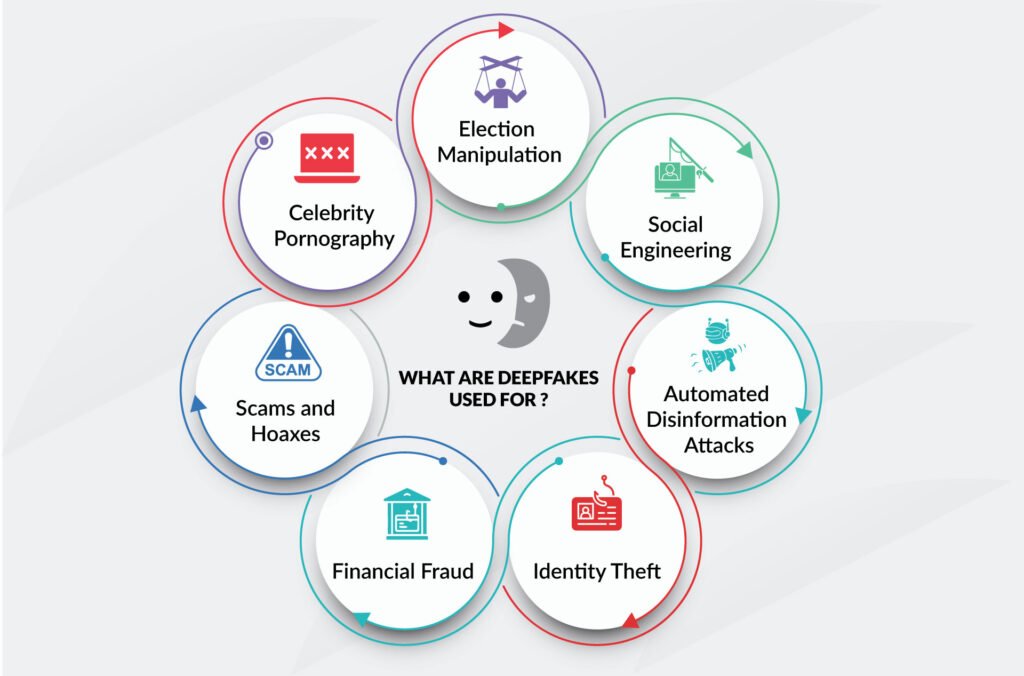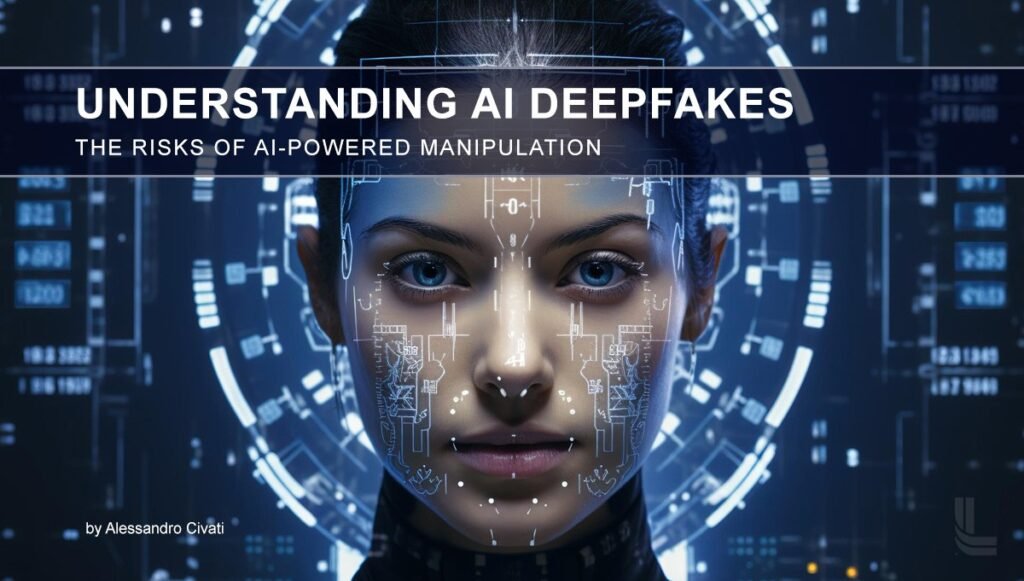Deepfake is a technology that uses artificial intelligence (AI), particularly deep learning, to create highly realistic but fake images, videos, or audio recordings. The term “deepfake” is a combination of “deep learning” (a subset of AI) and “fake.” Deepfakes can manipulate media to make it appear as though someone is saying or doing something they never actually said or did.
How Deepfakes Work

Deepfakes are created using Generative Adversarial Networks (GANs), a type of AI model. Here’s a simplified explanation of the process:
- Training the AI: The AI is trained on a large dataset of images, videos, or audio of the target person.
- Generating the Fake: The AI learns to mimic the person’s facial expressions, voice, or movements.
- Refinement: The AI refines the fake content to make it look or sound as realistic as possible.
Common Uses of Deepfakes

While deepfakes can be used for creative and positive purposes, they are often associated with misuse. Here are some examples:
Positive Uses

- Entertainment: Creating realistic CGI for movies or video games.
- Education: Simulating historical figures or scenarios for learning.
- Art: Generating unique and creative visual or audio content.
- Accessibility: Helping people with disabilities by generating synthetic voices or avatars.
Negative Uses

- Misinformation: Spreading fake news or propaganda.
- Fraud: Impersonating someone to scam others (e.g., fake CEO videos).
- Harassment: Creating fake explicit content to harm someone’s reputation.
- Political Manipulation: Fabricating videos of politicians or public figures to influence opinions or elections.
How to Spot a Deepfake

While deepfakes are becoming more sophisticated, there are often subtle signs that can help you identify them:
- Unnatural facial movements: Blinking, lip-syncing, or facial expressions may look off.
- Inconsistent lighting or shadows: The lighting on the face may not match the background.
- Audio mismatches: The voice may not sync perfectly with the person’s lip movements.
- Blurry or distorted edges: Especially around the face or hair.
- Unusual behavior: The person may say or do something out of character.
The Risks of Deepfakes

- Erosion of trust: Deepfakes can make it harder to trust what we see or hear online.
- Privacy violations: People’s images or voices can be used without their consent.
- Legal and ethical concerns: Deepfakes raise questions about consent, copyright, and accountability.
How to Protect Yourself

- Be skeptical: Question the authenticity of unusual or sensational content.
- Verify sources: Check if the content comes from a reputable source.
- Use detection tools: Tools like Deepware, Sensity, or Microsoft’s Video Authenticator can help identify deepfakes.
- Limit sharing personal media: Avoid posting high-quality photos or videos that could be used to create deepfakes.
Deepfake technology is a double-edged sword. While it has exciting potential, it also poses significant risks. Staying informed and cautious is key to navigating the challenges it presents.

